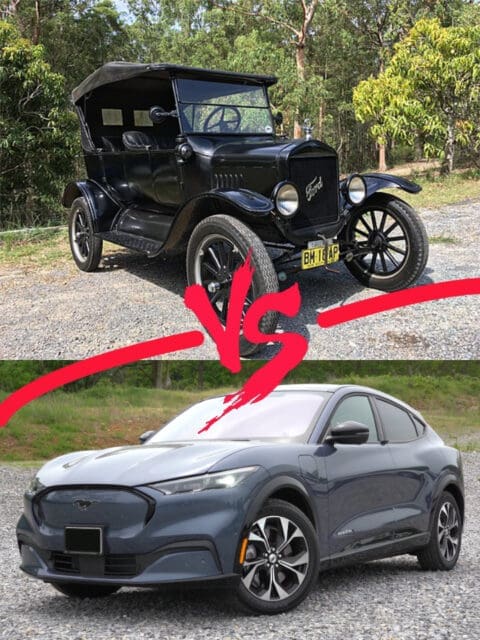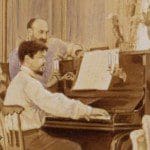Recently, in the New Year Composition Jumpstart and on Facebook, I made the assertion that “J.S. Bach is a supreme composer but a *terrible* model for other (esp. young) composers.” Specifically, I called him “the worst model for developing ideas.”
The comments have still been pouring in, though my favorite was the one that began simply, “Wrong.” So now that you (and that commenter) are totally scandalized, let me explain why I say that.
Namely, let me explain the three specific situations I have in mind that too often make Bach a dangerous model.
Bach’s Excellence — and Dangerousness

To be clear, Bach is a composer who has peers but no superiors. (I would further argue that Bach’s circle of peers is wider than many people admit, because of hero-worship, racism, and ignorance — but that’s another blog post.) Bach’s level of excellence is beyond question. There is not a musician alive who has nothing to learn from Bach’s music.
Yet, the inarguable excellence of Bach’s music doesn’t automatically make it a good model.
There are many styles of music for which Bach is only tangentially relevant. If you wanted to write EDM, for instance, you would learn a lot more, and much more quickly, if you were to study the music of Kaskade or Avicii.
But the stylistic relevance of Bach’s music (or lack thereof) isn’t what makes it a potentially “dangerous” model.
Studying Bach’s music is like using a good set of kitchen knives. It’s really useful if you know what to handle it (pun intended), but it is just as easy to weaponize or mishandle and thereby lose a finger — or worse.
The danger is three-fold, and these dangers feed directly into one another:
- Using the wrong tools to understand Bach’s music
- Using it as a starting point
- Holding it up as model for what your music should be
Using the Wrong Tools
In 2021, most students of Bach will analyze his music using some mixture of motivic analysis, Roman numeral analysis, and whatever they gleaned from their one semester of 18th-century counterpoint. They might have had one semester of Schenkerian analysis thrown in there, too.
But that’s it, because the vast majority of musicians who study Bach are not music theory or composition PhDs. In the previous paragraph, I’m already being generous with the analytical tools most musicians know, because most musicians — I’m including everyone, pro and amateur, regardless of style — did not complete an undergraduate composition degree.

But let’s be generous for a moment and assume a musician wants to compose and has the training I identified in the first paragraph under this heading.
The danger of analyzing Bach with this training — which, to be clear, does hit a baseline of “good” and “industry-standard” — is that it still leaves massive gaps and misunderstandings.
To name only one, according to C.P.E. Bach, J.S. Bach “did not really buy ‘this inversion business,’” in the words of Robert Gjerdingen.
“If you’re writing in the style of Bach,” Gjerdingen explains, “you can’t throw in any inversion of a chord in a particular instance. It’s usually a very particular version of the chord, so, from Bach’s point of view, those were different things because they were used differently.”
Ultimately, using the standard undergraduate tools to analyze Bach is like using the service manual of a 1920s Ford Model T to repair a 2021 Ford Mustang.
Sure, there are some major similarities (“4 wheels!” “Headlights!”), but you’ll be missing a lot of key details and concepts to understand what’s going on in the late model Ford.
In contrast, if you approach Bach from an historical theoretical/compositional perspective, his music makes a lot more sense.
Over the past two decades especially, scholars such as Derek Remeš, Peter Schubert, Kevin Korsyn, and Robert Gjerdingen, among others, have done much to elucidate, “This is how Bach and his contemporaries actually thought about and taught music composition — and this is what 21st-century musicians can do with that understanding.”
Using Bach as a Starting Point
Although using period-appropriate tools to analyze and imitate Bach throws much more light onto his music than the standard university curriculum, Bach can still be a poor model to use as a starting point.
Others have interesting things to say about with which historical models they choose to start teaching and why (see Peter Schubert talking about teaching fugue), but what I had in mind specifically yesterday was Bach’s approach to developing ideas.
Bach uses a number of tools to develop his motivic ideas. These tools are almost universally useful for any composer. These include transposition, inversion, retrograde, extension/fragmentation, rhythmic augmentation/diminution, interval expansion/contraction, etc. You see these basic tools used all the time, even by composers who don’t know their names.
As useful as these tools are, Bach’s deployment of them is what can make his music a poor model.
Unlike most music, Bach’s music is SATURATED with development. (See, for instance, David Bennett Thomas’s analysis of Bach’s first invention.)
Historically, this development strategy has been called “organicism”: every musical gesture grows out of a “single seed.” In the recent Jumpstart, to challenge its knee-jerk desirability, I less charitably called it Bach’s “backwater relationship” strategy: i.e., "Everyone is related to everyone else."
That saturation is what makes it a terrible model for young composers: first, because they're not capable of that level of integration. It takes serious contrapuntal chops to integrate motives that tightly. One semester of counterpoint usually doesn’t cut it — and most composers don’t have even that training.
Second, it’s much easier to get to that level of contrapuntal fluency (a) using the historical methods Schubert, Gjerdingen, and others have outlined and (b) using less sophisticated composers as one’s initial models.
The alternative (using Bach as one’s primary model for learning counterpoint) is like jumping from middle-school algebra directly to linear algebra. Sure, you can do it. Kind of. But not without a lot of unnecessary struggle and heartache.
Holding the Model as an Ideal
Bach-level motivic saturation can also be a terrible model because it too often gives composers the wrong idea.
The level of motivic integration one sees in Bach, Brahms, Bartók, or Berg — although an impressive and totally valid aesthetic — is not at all required to write exceptional, well-crafted, breathtaking, or goosebump-inducing music.

Debussy’s music doesn’t work that way. Nor does Josquin’s (the “master of the notes, which must do as he wishes”). Nor does John Williams’s or Stevie Wonder’s or any number of other world-class composers.
The combination of having (charitably) insufficient technical training and assuming that “all great music works like this” leads to statements like “Bach is a genius. Us lowly common folk could never write anything like that.”
Yes, I am taking aim at a misconception many professionals understand. But how often, fellow professionals, do you explicitly tell this to your students? If you are the exception, I congratulate you — but how often do your peers say it?
Furthermore, fellow professionals, how often do you throw shade at Bach’s own models, such as Vivaldi and Telemann?
Most of all, how often do you look at Bach and say, “I could never do anything like that”?
That last statement is, to be blunt, complete nonsense.
It has NEVER been easier to write like Bach, because Bach already did it. Sure, it might take you the better part of a decade to master all the intricacies of his idiom, but you can do it. You’re not reinventing the wheel.
Even if you don’t want to sound exactly like Bach, there are plenty of composers alive today who have Bach’s level of compositional technique. Thomas Adès is one such composer, but I am positive there are dozens if not a few hundred others.
It’s a niche goal, but it’s not exclusively for geniuses or superhumans. As J.D. Roth puts it, you can’t have everything you want in this world, but you can have anything you want. Bach-level compositional technique 100% falls into that latter category.
Takeaway
The point of all this is that, while Bach’s music makes a valid aspiration, it can be a dangerous starting point.
The danger of using Bach’s music as a model is that, past a certain point, if analyzed with the wrong tools, it can be incomprehensible how he created it.
This incomprehensibility in turn can lead to a number of harmful assumptions and consequences:
- That Bach is some unattainable kind of genius
- That the level of motivic integration in Bach is some kind of ideal
- That composers who don’t match that ideal aren’t “as good as” Bach
- That “I” (random composer) “am not as good as Bach — and never will be”
- That the attendant shame of the preceding assumptions hangs as an unavoidable yet unacknowledged cloud that continually rains down self-judgment, perfectionism, and imposter syndrome.
Spelled out in black and white, these thoughts are obviously toxic. But, unless they’re lying to themselves, anyone who has even been around composers knows that most of them carry some version of these assumptions and consequences.
It is the fortunate few who have escaped that cloud of toxicity. If that's you, again, I’m genuinely happy for you.
If it’s not — if you’re like most of us and live under that cloud of anxiety — know that composing doesn’t have to be that way.
It is my goal as a teacher of composition to ensure that no one has to suffer through those problems:
- That they can own their voice.
- That they can master the kinds of technique necessary to share their artistic vision — whether or not it looks like Bach’s.
- That they can wield this technique in a creative process that feels fun, easeful, and full of energy.
- That through their technical and process tools, they can create music that gets stuck in people’s ears, gives them goosebumps, takes their breath away, and holds them riveted to their seats.
- That through this music, they can foster deep, healthy, and fulfilling connections among their collaborators, their audiences, and themselves.
That is the aim of my blog posts, my social media content, and the whole Wizarding School for Composers — and what I consider to be a heathy, uplifting, and realistic aspiration for any composer to pursue.

Don’t Miss Next Week’s Post
Sign up to stay in the loop about my music—and ideas for your own composing!

